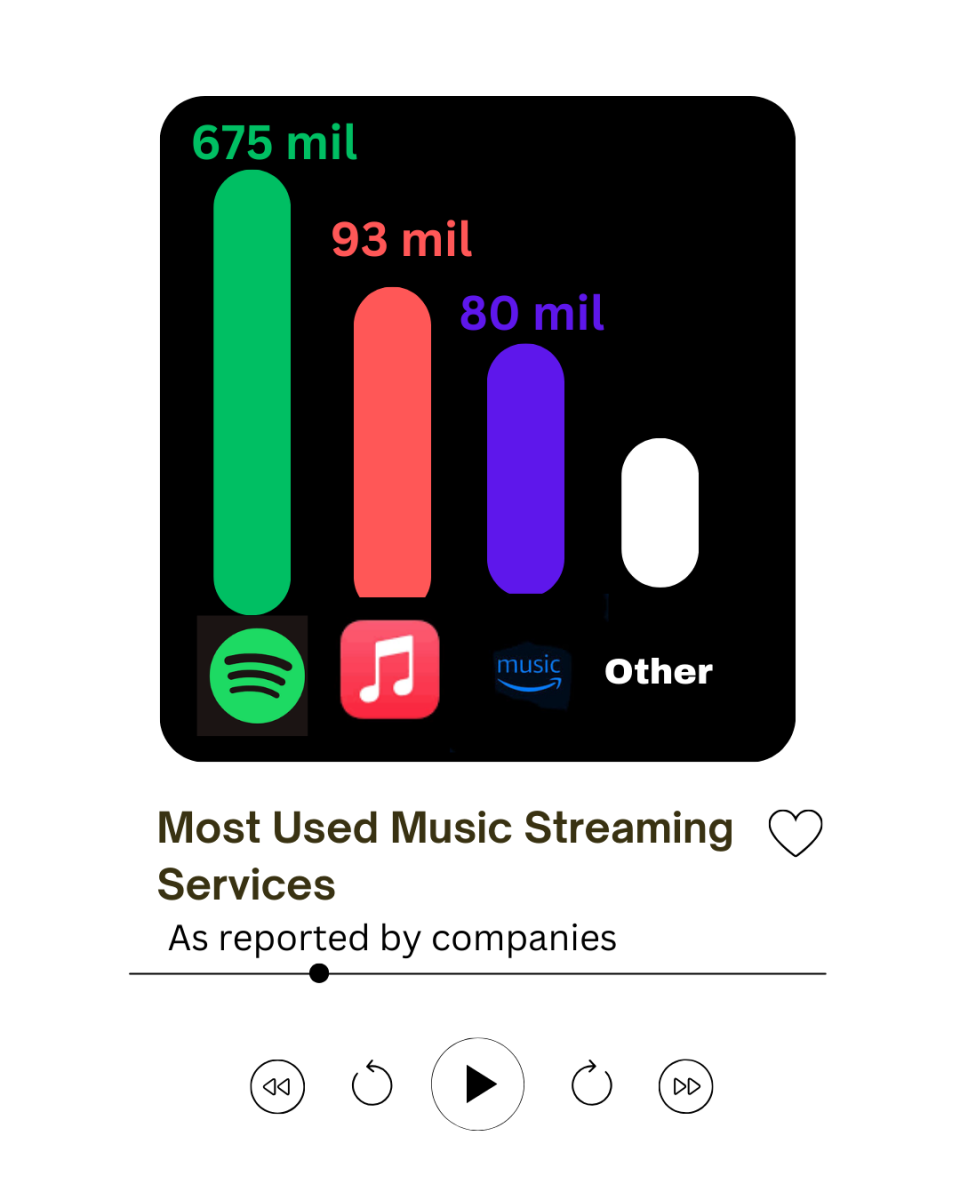When you think of grades, how do you feel? For me, grades can cause me a lot of stress. It can be partly because I have high expectations for myself. I feel the pressure to get the letter grade I want in every single one of my classes.
According to Forbes, when students obsess over their grades, it causes stress, anxiety and impacts their mental health.
There are some concerns with the current grading system that we need to address such as grades being an inaccurate representation of students’ learning and grades not allowing room for failure.
An Inaccurate Representation
Here in the United States, a letter grade measures students’ learning or knowledge. With a bad grade, students can feel like they’re not “good enough,” putting pressure on themselves to reach for a certain letter grade. Why? Some students have come to believe that grades represent their knowledge of a subject and can even reflect who they are as a person. In reality, that’s not the case. That’s because grades don’t measure students’ abilities and learning accurately.
For example, many teachers assign tests that will examine a students’ knowledge and they will be graded on that test. But, memorizing material for a test doesn’t showcase a students’ knowledge about a topic. Instead, it showcases their ability to memorize the material.
But what about a teacher’s grading style? That can have an influence on a student’s grade. Grading styles can vary from teacher to teacher. Even if it’s the same course, a teacher may evaluate a test or project differently compared to another teacher. For example, one teacher may believe that a students’ project is worthy of an A while another teacher may believe that the same students’ project is worthy of a B depending on how they evaluate the project. This can be unfair to students.
No Room for Failure
Students are at school to learn and make mistakes. However, the grading system here in the United States doesn’t fully allow for that. Even if a student makes one tiny mistake on a test or project, their grade can get lowered. But, how does that make a student feel? For me, it can cause a lot of stress and anxiety. It can cause me to strive for perfection when in reality, that can be a challenging task. The grading system has allowed students to fear failure instead of accepting failure because it’s a part of growing and learning.
Besides not allowing failure in tests or projects, this can also happen in the classroom environment. The grading system focuses on the outcome or what students need to achieve rather than allowing students to experience failure and growth, according to Education World. Students may not want to ask questions or share an answer if they are worried about failure and being penalized for it.
Summit Learning
In Michigan, from 5th to 8th grade, I tried this learning platform called Summit Learning which is now called Gradient Learning and I loved it. If it was possible, I’d still be doing it.
Summit Learning isn’t your traditional learning where students are being lectured by teachers. Instead, it’s online learning in a school setting.
One component is that students take tests online with one due every few weeks for each core subject area to master the material independently. There are ten questions and students only need an 8/10 to pass it. No matter if a student gets 8/10 or 10/10, their grade doesn’t get lowered. That was one of the reasons I loved Summit. There was room for failure. I didn’t feel pressured to have to get a 10/10 to show that I understood the material. Instead, I aimed to pass it with an 8/10. In order to understand the material for each test, there were multiple resources available – articles, videos, images, study guides, etc. – because students have different learning styles.
Additionally, students complete projects with their classmates with the help of teachers. This is another way that students showcase their learning besides the tests. Students are given clear rubrics so that they understand what they need to do to get the grade they want on the project. This is the largest percentage of a students’ grade. Students complete checkpoints to check their understanding and prepare them for the final part of the project.
Furthermore, there are SMART goals which students set at the start of each day in order to help them achieve what they want to achieve and to make progress in their learning.
Students are also mentored where they are assigned a teacher who helps them to not only achieve their goals in schools but also is someone they can talk to about their personal life.
Summit Learning is not only a learning platform allowing students to experience failure but also allows students to get creative through projects, set goals for success and to have someone who helps them achieve their goals. This learning platform has also taught me valuable skills such as time management, collaboration, meeting deadlines and being more comfortable with presentations.
In my opinion, grading needs to be more like Summit Learning. That way students will be comfortable with failing because they will realize that failure helps them to succeed. In addition, that way students will be able to showcase their learning in multiple ways, helping them to achieve the grade they deserve. Because students should want to learn instead of having to worry about what grade they receive.
Future of Grading
There are many factors that need to be considered when making changes to the grading system, according to Education World.
One factor is competition. Some students can make grades a competition, trying to achieve the highest grade compared to other students. The grading system shouldn’t be like that. Instead, students need to work better together and collaborate when learning. I believe that students should only be compared to themselves because every student is unique.
Additionally, students’ learning styles vary and this needs to be considered when making changes to the grading system in order to make it feel more inclusive and fair to all students. For instance, teachers could allow multiple ways for students to learn the material such as through videos, presentations, notes and games, allowing students to find the way that works best for them.
A third example is honesty. When students fear failure, students may not be honest with their teachers when asked if they are understanding the material. Because of this, the grading system needs to allow for students to fail and learn from their mistakes. A possible solution to this could be to give students multiple opportunities to learn from their mistakes rather than being assigned a grade after their first attempt. That way students will want to be honest with their teachers and share what they are confused about.
Personally, I don’t think students should receive a letter grade that conveys what they have learned and doesn’t allow room for failure. Instead, students should just receive feedback and experience growth through their feedback. We can’t expect students to understand everything that they are learning the first time. We are at school to learn and grow and failure is a part of that. It shouldn’t cause students unwanted stress and anxiety but instead show them motivation and determination to keep trying.















![Senior River Thompson joins the Jazz Ensemble by singing “That Old Black Magic” by Mercer and Arlen Arr. Mark Taylor, along with senior Annie Brody on guitar and junior Thomas Teixeira on bass, earning big applause. “[The concert had] great energy because it's the last [jazz concert] of the year,” Brody said.](https://www.lhsdoi.com/wp-content/uploads/2025/04/Eight-That-Old-Black-Magic-1200x800.jpg)
![Mr. Abullh Ali, manager/assistant, helps open Queen Yemeni Coffee in downtown Libertyville at 606 North Milwaukee Ave. With the help of employees such as manager and LHS senior Yousef Taha, they are able to bring the Yemeni and Ethiopian culture to Libertyville by using their Queen spices, cinnamon and cardamom in their drinks such as Adani Chai, which is inspired by Sheda, the Queen of Yemen and Ethiopia. “The history of our coffee [is] a long history and we believe that Yemen and Ethiopia started the coffee and we are bringing something unique to the community,” Mr. Ali said.](https://www.lhsdoi.com/wp-content/uploads/2025/04/Photo-1-1200x800.jpg)



